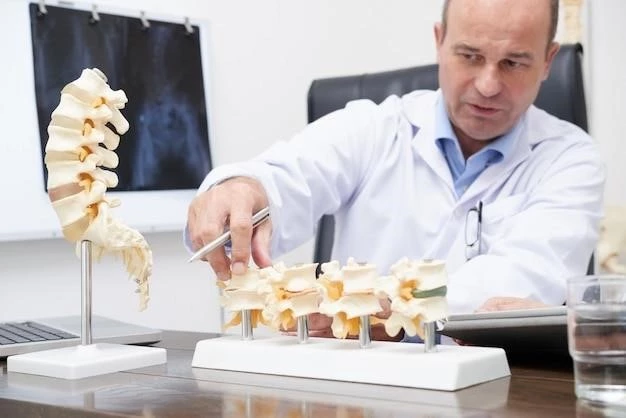Introduction
Syngnathia cleft palate, a rare anomaly involving jaw fusion, has varying presentations and associated abnormalities. Understanding its features and impacts is crucial for diagnosis and management.
Overview of Syngnathia Cleft Palate
Syngnathia cleft palate is a rare anomaly involving the fusion of the jaw, leading to varying presentations and associated abnormalities. The condition may manifest as fibrous or bony fusion between the maxilla and mandible, impacting jaw function and oral health significantly. Diagnosis and management of syngnathia cleft palate require a multidisciplinary approach to address the complex challenges posed by this condition.
Clinical Presentation
Syngnathia cleft palate syndrome presents with fusion between the upper and lower jaws, resulting in a split roof of the mouth. Associated abnormalities may include cleft lip, mandibular clefts, tongue anomalies, and mandibular hypoplasia, with cleft palate being the most common. Consultation with healthcare providers is essential for comprehensive evaluation and management.
Features of Syngnathia Cleft Palate Syndrome
Syngnathia cleft palate syndrome is characterized by fusion between the upper and lower jaws, often resulting in a split roof of the mouth. This condition may present with additional abnormalities such as cleft lip, mandibular clefts, tongue anomalies, mandibular hypoplasia, and other craniofacial malformations. Understanding the complex interplay of these features is crucial for accurate diagnosis and personalized treatment approaches.
Associated Abnormalities
Syngnathia cleft palate syndrome may coexist with various craniofacial anomalies, including cleft lip, mandibular clefts, tongue abnormalities, mandibular hypoplasia, and craniofacial malformations, presenting unique challenges for diagnosis and treatment. Consultation with healthcare professionals is vital to address the complex interplay of associated abnormalities effectively.

Diagnosis
Diagnosing syngnathia cleft palate involves identifying the fusion of the upper and lower jaws along with associated abnormalities. Healthcare providers utilize clinical evaluation, imaging studies, and genetic testing to confirm the presence of this rare anomaly for appropriate management.
Diagnostic Methods for Syngnathia Cleft Palate
The diagnosis of syngnathia cleft palate involves a comprehensive evaluation that includes clinical assessments, imaging studies such as X-rays and CT scans, and genetic testing to identify the underlying anomalies accurately. A multidisciplinary approach with healthcare providers specializing in craniofacial anomalies is essential for an accurate diagnosis and tailored treatment plan.
Causes
The underlying factors of syngnathia cleft palate involve rare anomalies resulting from fibrous or bony fusion between the maxilla and mandible, contributing to the unique presentation of this condition.
Syngnathia cleft palate is a rare anomaly characterized by fibrous or bony fusion between the maxilla and mandible, leading to distinct craniofacial abnormalities. Understanding these underlying factors is crucial for accurate diagnosis and the development of individualized treatment strategies.
Treatment
Management approaches for syngnathia cleft palate involve a multidisciplinary team to address the fusion of the upper and lower jaws effectively. Surgical interventions may be necessary to restore jaw function and improve oral health.
Underlying Factors of Syngnathia Cleft Palate
Syngnathia cleft palate stems from fibrous or bony fusion between the upper and lower jaws. This rare anomaly results in distinct craniofacial abnormalities, highlighting the importance of personalized treatment strategies tailored to individual presentations.
Surgical Interventions
Surgical interventions play a crucial role in managing syngnathia cleft palate, focusing on addressing the fusion between the upper and lower jaws to restore proper jaw function and improve overall oral health. Different surgical techniques may be employed based on the individual’s specific anatomy and needs, emphasizing the importance of a personalized approach in treatment planning.
Prognosis
The outlook for individuals with syngnathia cleft palate varies depending on the severity of the anomaly and associated abnormalities. Early diagnosis and multidisciplinary management can significantly impact the prognosis, improving jaw function and quality of life.
Outlook for Individuals with Syngnathia Cleft Palate
The prognosis for individuals with syngnathia cleft palate depends on the severity of the anomaly and associated abnormalities. Early diagnosis and appropriate multidisciplinary management can significantly impact the outlook, potentially improving jaw function and enhancing overall quality of life. Close monitoring and coordinated care are essential for addressing the complex challenges posed by this rare condition.

Prevention
Strategies to prevent syngnathia cleft palate involve early detection and comprehensive prenatal care to address potential risk factors associated with craniofacial anomalies. Consultation with healthcare providers for genetic counseling and monitoring during pregnancy can aid in identifying and managing conditions that may contribute to the development of this rare anomaly.
Strategies to Prevent Syngnathia Cleft Palate
Preventing syngnathia cleft palate involves early detection through comprehensive prenatal care to address potential risk factors associated with craniofacial anomalies. Genetic counseling and monitoring during pregnancy can aid in identifying and managing conditions contributing to the development of this rare anomaly, emphasizing the importance of proactive healthcare interventions.
Research and Studies
Current research on Syngnathia cleft palate syndrome involves exploring the rare anomaly’s underlying mechanisms, diagnostic methods, and treatment modalities. Stay informed about ongoing studies to contribute to advancements in understanding and managing this complex condition.
Current Research on Syngnathia Cleft Palate Syndrome
Researchers are actively investigating syngnathia cleft palate syndrome to understand its underlying mechanisms, diagnostic techniques, and treatment options. Stay informed about the latest advancements in research to contribute to the knowledge and management of this rare condition.
Support and Resources
Find available support organizations dedicated to helping individuals with Syngnathia cleft palate. These resources offer valuable assistance, guidance, and community for those affected by this rare condition.
Available Support Organizations for Syngnathia Cleft Palate Patients
Explore resources provided by support organizations dedicated to assisting individuals affected by Syngnathia cleft palate. These organizations offer valuable support, information, and community for both patients and caregivers navigating this rare condition.
Syngnathia cleft palate presents a unique challenge with various associated abnormalities, requiring multidisciplinary care and support. Stay informed about advancements in research and resources to make well-informed decisions and access appropriate assistance for managing this complex condition effectively.
Summary of Syngnathia Cleft Palate Information
Syngnathia cleft palate is a rare condition characterized by the fusion of the upper and lower jaws, requiring multidisciplinary care. Understanding its underlying mechanisms, diagnostic methods, and treatment options is crucial for effectively managing this complex anomaly.
